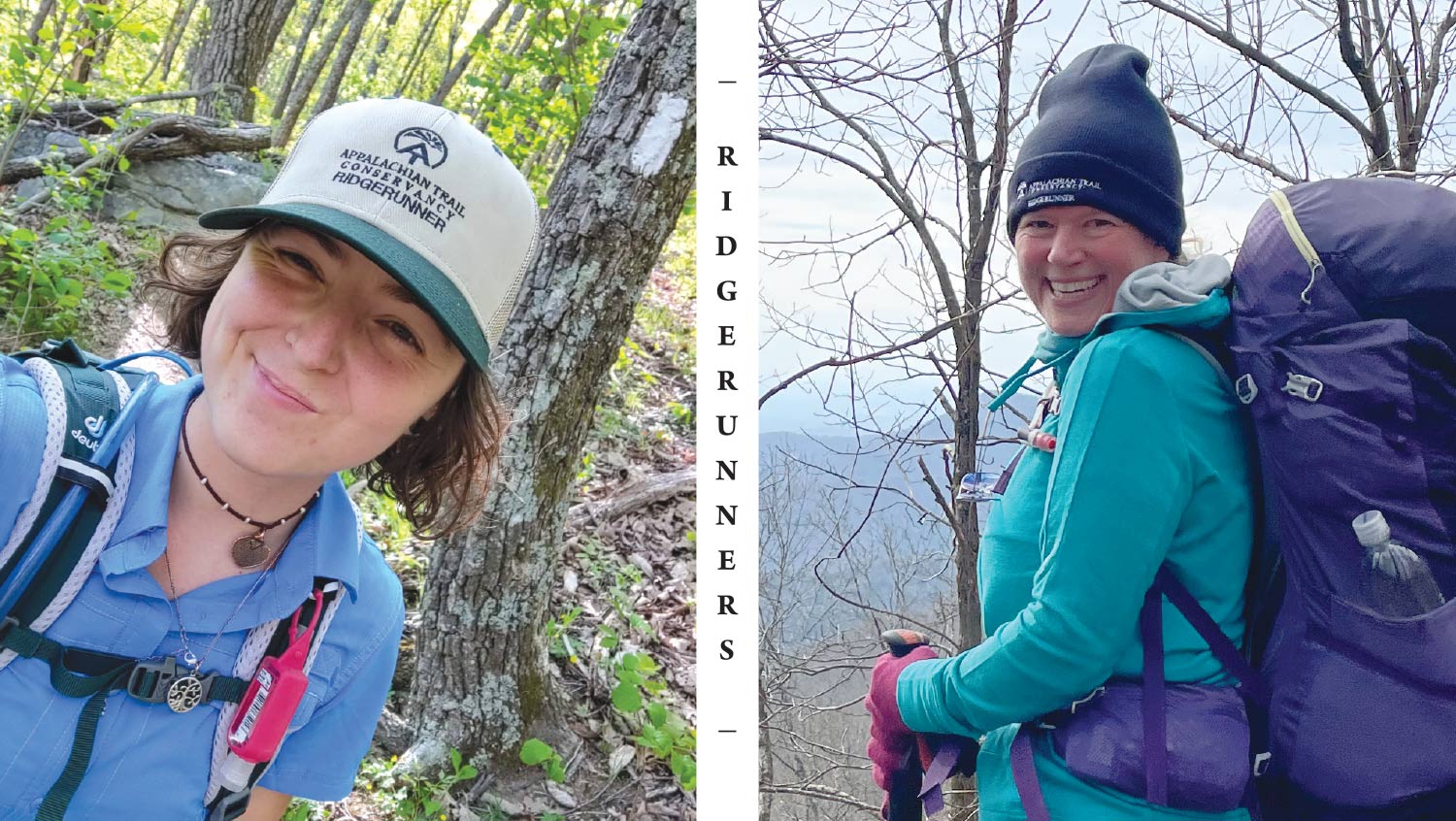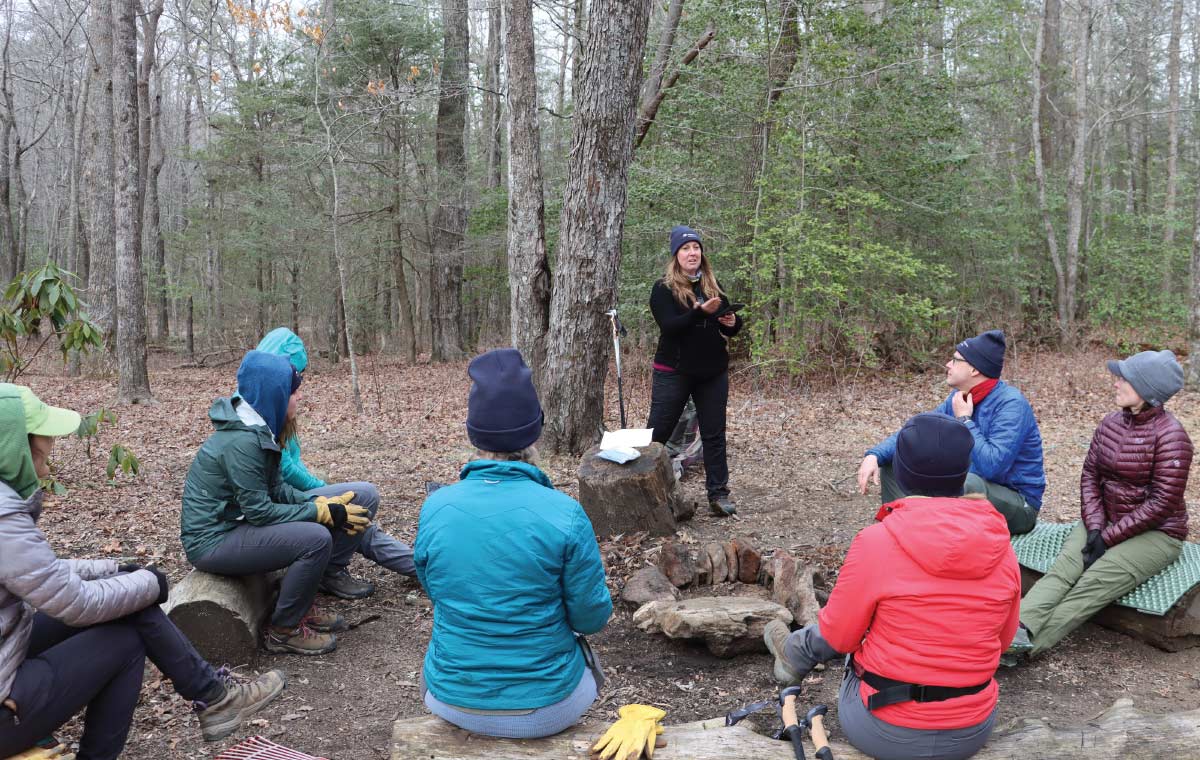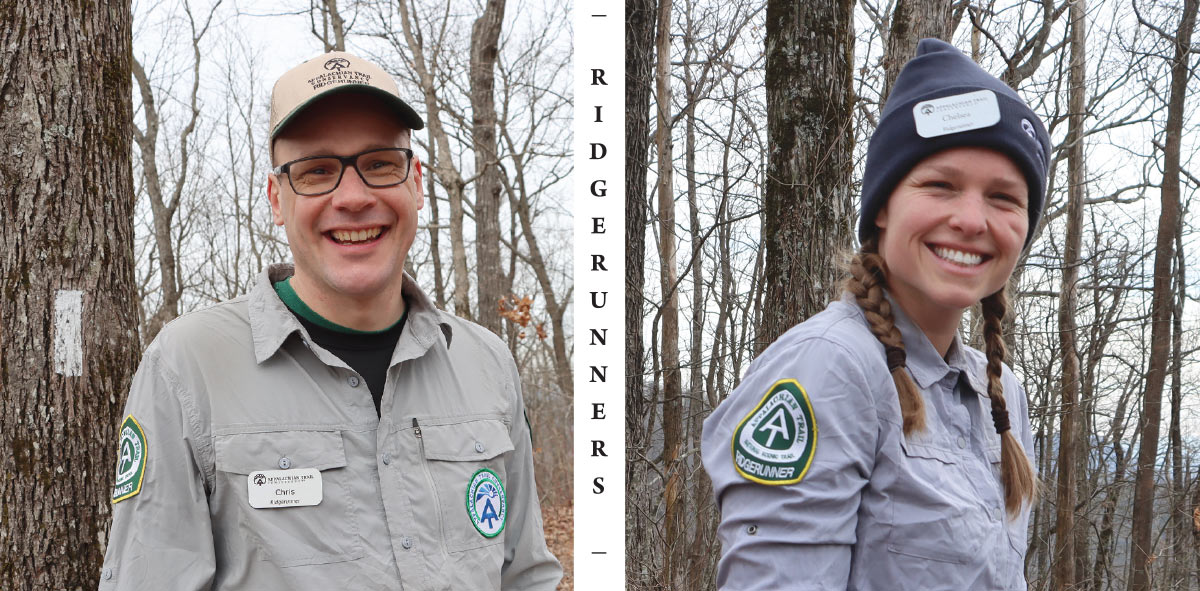of the Trail
Despite some of the decidedly unglamorous tasks they do day in and day out, ridgerunners on the Appalachian Trail bring a dedication and energy to their work that is fueled by passion for the Trail and its community. Ridgerunners play a critical role in the maintenance and preservation of the A.T. that only those exceedingly familiar with real-time, on-the-ground needs can provide.

Each year, the ATC hires some 30 people to monitor specific segments of the Trail that are among the most frequently visited. These include sections near the southern terminus of the A.T. in Georgia, the Great Smoky Mountains, as well as sections of the Trail in southern and central Virginia, south-central Pennsylvania, and parts of Maine. Local Trail clubs and partner agencies in the Mid-Atlantic and New England also employ ridgerunners. These combined efforts, aided by the work of volunteers, ensure that the Trail’s most popular and heavily used areas have friendly experts on hand who not only monitor and maintain the Trail, but who also educate and advise thru-hikers, day-hikers, and first-time Trail visitors alike.
Trained in wilderness first-aid and CPR, and thoroughly versed in the principles and practices of Leave No Trace, ridgerunners are well qualified to act with the “Authority of the Resource,” teaching visitors how to enjoy the Trail with minimal environmental impact. This educational approach involves engaging Trail visitors in conversation, establishing a connection, perhaps sharing information about the local flora and fauna, and gently offering observations about how the Trail and its surroundings are affected by human behavior. Never confrontational, these interactions often lead to greater understanding about the fragile alpine vegetation that can be trampled when people go off the Trail, or how water quality can be impacted if people wash dishes in a stream or dispose of trash improperly, or how wildlife can become negatively habituated by improper food storage. Ridgerunners then make sure to highlight behaviors or solutions that can protect the Trail — the “Resource” — for generations to come.
Suzanne Neal, a ridgerunner in Catawba Valley in Virginia near McAfee Knob, one of the A.T.’s most iconic and photographed spots, says, “I sometimes talk to as many as 300 visitors in a weekend. I try to have a meaningful interaction with each person, slipping in a bit of Leave No Trace education as much as I can. I love teaching people how to care for the Trail.”
Over the next five years, the ATC aspires to gradually double the number of ridgerunners who are on the Trail year-round protecting the A.T.’s most beloved places, while respecting Trail values of self-reliance and solitude in nature for those who seek it.
What do ridgerunners wish more A.T. hikers knew before starting out on their adventure? Tonya Lonsbury, a thru-hiker in 2022, recommends preparing for cold and potentially hazardous weather conditions. “A lot of people think that the South means it’s warm and it’s humid — but guess what? It can snow, even in April!” She warns that ignoring this advice can lead to some miserable days. “There are a lot of injuries related to being cold, whether it’s hypothermia or frostbite or just simply being uncomfortable in the cold wet conditions.”
Chris Minnich, who started his second year as a Georgia ridgerunner in 2024, echoes the need for hikers to literally “weigh” the risks posed by the cold. “I wish that they paid more attention to the weather instead of pack weight because sometimes, trying to keep their pack light puts them in serious danger up in the mountains.”


She urges moderation in the beginning to avoid setbacks. “Overuse injuries are super common here in Georgia because people are going really hard, really fast, and their body just isn’t used to it. They end up having to slow down or stop and let their body heal, so take your time — enjoy it. It’s a beautiful state, don’t rush through it.”
Another frequent mistake is carrying too much gear. Collin Chambers, a ridgerunner in the Smokies, notes the number of people who get off the Trail because their pack is just too heavy. Emphasizing that it is easy to get non-essentials as the need arises or to trade gear along the way, she advises, “Go light, go easy, and trust that everything will come to you when you need it. The Trail provides.”
Ridgerunners also play a special role in nurturing the special sense of community and caring on the Trail. “The Appalachian Trail community is the epitome of kindness,” says Lonsbury. “There’s a lot of negativity, there’s a lot of criticism, there’s a lot of division and judging, unfortunately, in our society today. All of that falls away when you’re out on the Trail and within the community — whether it’s the hikers, people involved with the ATC, the volunteer clubs and organizations, even down to the hostels and the shuttle drivers.”
It’s the community aspect of the role — being part of a unique community by giving back to both it and the Trail — that makes the job of a ridgerunner so special and sought after. As the community of people who love the A.T. continues to expand, so too will the demands placed on ridgerunners, volunteers, and all who work to protect this cherished resource.
So the next time you see a ridgerunner out on the Trail, stop and say hello. And perhaps offer a word of gratitude for all they do to ensure a world-class experience for us all.

